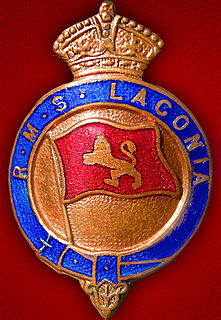
An ocean liner is a passenger ship primarily used as a form of transportation across seas or oceans. Liners may also carry cargo or mail, and may sometimes be used for other purposes.

A passenger ship is a merchant ship whose primary function is to carry passengers on the sea. The category does not include cargo vessels which have accommodations for limited numbers of passengers, such as the ubiquitous twelve-passenger freighters once common on the seas in which the transport of passengers is secondary to the carriage of freight. The type does however include many classes of ships designed to transport substantial numbers of passengers as well as freight. Indeed, until recently virtually all ocean liners were able to transport mail, package freight and express, and other cargo in addition to passenger luggage, and were equipped with cargo holds and derricks, kingposts, or other cargo-handling gear for that purpose. Only in more recent ocean liners and in virtually all cruise ships has this cargo capacity been eliminated.

A troopship is a ship used to carry soldiers, either in peacetime or wartime. Operationally, standard troopships – often drafted from commercial shipping fleets – cannot land troops directly on shore, typically loading and unloading at a seaport or onto smaller vessels, either tenders or barges.
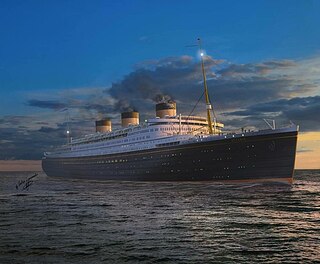
The RMMV Oceanic was the planned name of an unfinished ocean liner that was partially built by Harland and Wolff for the White Star Line. The ship was to have been the first 1,000-foot (300 m)-long ocean liner. It was intended to be the largest ocean liner for the White Star Line, thus it would have been larger than the earlier White Star giants, Olympic, Titanic, Britannic, and Majestic.

SS Alcantara was an ocean liner that went into service just weeks before the start of World War I, was converted to an armed merchant cruiser in 1915, and was sunk in combat with the German armed merchant cruiser SMS Greif in 1916.

RMS Arlanza was a 14,622 GRT ocean liner of the Royal Mail Steam Packet Company. She was built in Ireland in 1912 for RMSP's scheduled route between England and South America. She was a Royal Navy armed merchant cruiser from 1915 until 1920. She returned to civilian liner service in 1920 and was scrapped in England in 1938.

RMS Alcantara was a Royal Mail Lines ocean liner that was built in Belfast in 1926. She served in the Second World War first as an armed merchant cruiser and then a troop ship, was returned to civilian service in 1948 and scrapped in 1958.

RMS Rhone was a UK Royal Mail Ship owned by the Royal Mail Steam Packet Company (RMSP). She was wrecked off the coast of Salt Island in the British Virgin Islands on 29 October 1867 in a hurricane, killing 123 people. She is now a popular Caribbean wreck dive site.
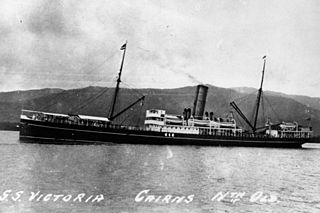
The Pacific Steam Navigation Company was a commercial shipping company that operated along the Pacific coast of South America, and was the first to use steam ships for commercial traffic in the Pacific Ocean.

RMS Atrato was a UK steamship that was built in 1888 as a Royal Mail Ship and ocean liner for the Royal Mail Steam Packet Company. In 1912 she was sold and became the cruise ship The Viking. Toward the end of 1914 she was requisitioned and converted into the armed merchant cruiser HMS Viknor. She sank in 1915 with all hands, a total of 295 Royal Navy officers and men.
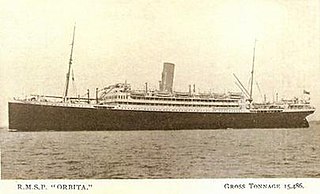
SS Orbita was an ocean liner built in 1913-14 by Harland & Wolff in Belfast for the Pacific Steam Navigation Company. She was launched on Tuesday, 7 July 1914, at 11.15 GMT. Her sister ships were SS Orduna and SS Orca.
RMS Magdalena was a British steamship that was built in 1889 as a Royal Mail Ship and ocean liner for the Royal Mail Steam Packet Company. In the First World War she served as the troop ship HMT Magdalena. After a long and successful civilian and military career she was scrapped in 1923.

RMS Atrato was a UK iron-hulled steamship. She was built in 1853 for the Royal Mail Steam Packet Company as a side-wheel paddle steamer, and when completed was the World's largest passenger ship. She was a Royal Mail Ship until 1870.
Three ships were of the Royal Mail Line were named RMS Magdalena.
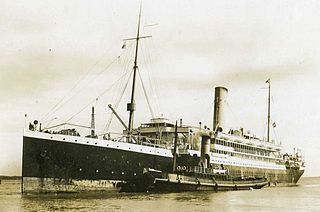
HMT Aragon, originally RMS Aragon, was a 9,588 GRT transatlantic Royal Mail Ship that served as a troop ship in the First World War. She was built in Ireland in 1905 and was the first of the Royal Mail Steam Packet Company's fleet of "A-liners" that worked regular routes between Southampton and South American ports including Buenos Aires.

HMHS Asturias was a Royal Mail Steam Packet Company ocean liner that was built in Belfast in 1908 and scrapped in Japan in 1933. She was a Royal Mail Ship until 1914, when on the eve of the First World War the Admiralty requisitioned her as a hospital ship.

RMS Asturias was a Royal Mail Lines ocean liner that was built in Belfast in 1925. She served in the Second World War as an armed merchant cruiser until she was crippled by a torpedo in 1943. She was out of action until 1948 when she returned to civilian service as an emigrant ship. She became a troop ship in 1954 and was scrapped in 1957.
This page is based on this
Wikipedia article Text is available under the
CC BY-SA 4.0 license; additional terms may apply.
Images, videos and audio are available under their respective licenses.
